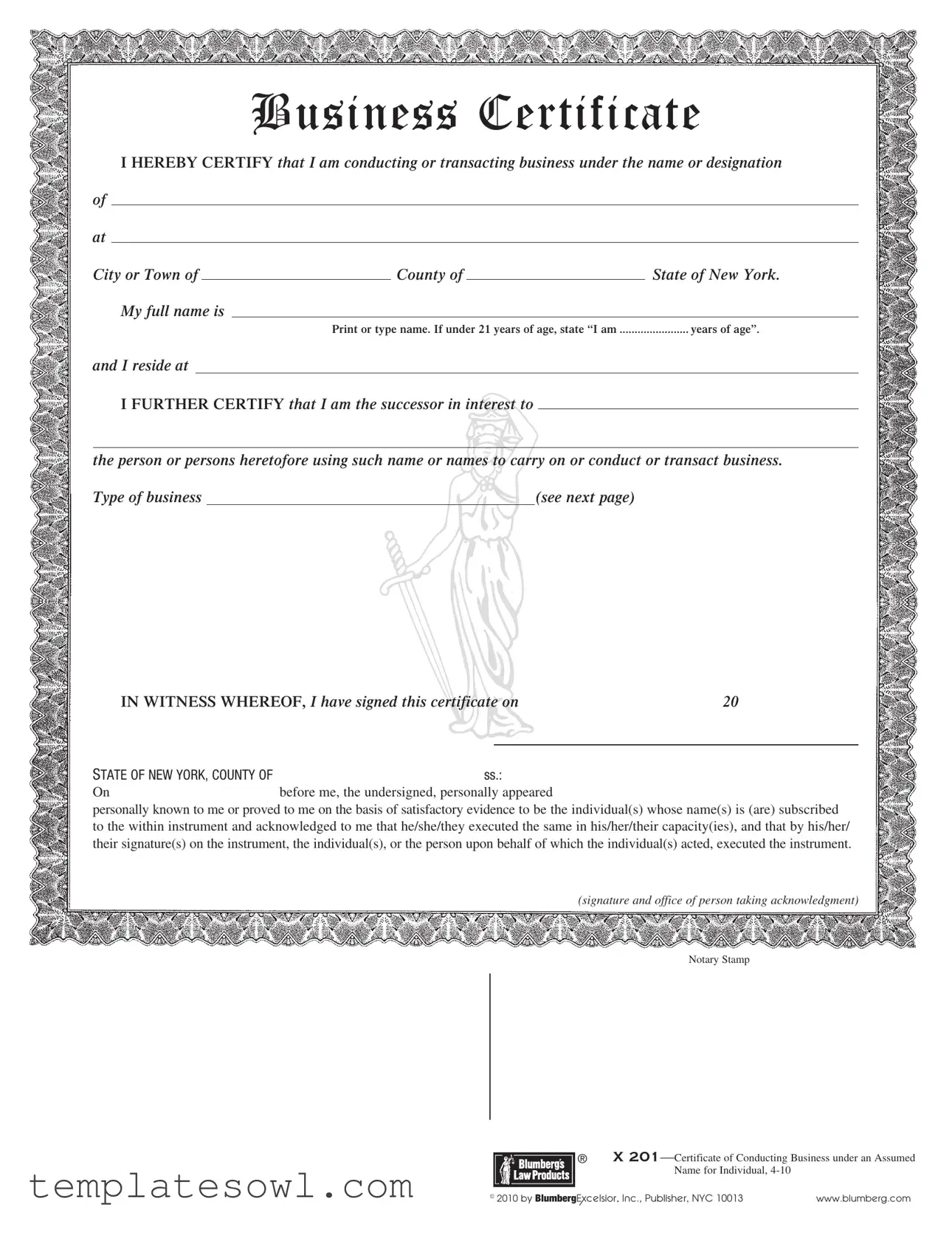What is a Business Certificate?
A Business Certificate, also known as a Certificate of Conducting Business under an Assumed Name, is a legal document that certifies that an individual is operating a business under a name other than their own. This certificate informs the public of the identity of the business owner and the name of the business, ensuring transparency in business transactions.
Why do I need a Business Certificate?
Obtaining a Business Certificate is essential for several reasons. It helps establish legitimacy and credibility for your business. Additionally, some banks require this document to open a business checking account. Furthermore, it allows for legal protection against others using your business name within the same jurisdiction.
Who needs to file for a Business Certificate?
Any individual or partnership conducting business under a name that is not their legal name must file for a Business Certificate. This is applicable to many types of businesses, from sole proprietorships to partnerships, as well as certain types of organizations that prefer to operate under a different name.
What information is required to complete the Business Certificate form?
The Business Certificate form requires several pieces of information. You will need to provide the name under which you're conducting business, your full name, your age if under 21, and your residential address. You must also indicate that you are the successor in interest if applicable and specify the type of business you are conducting.
Where do I need to file the Business Certificate?
The Business Certificate must be filed at the county clerk’s office in the county where you plan to conduct business. Ensure that you check any specific local regulations as they may vary between counties in New York State.
Is there a fee associated with filing a Business Certificate?
Yes, there is typically a fee for filing a Business Certificate, and it varies by county. It is advisable to contact your local county clerk's office to confirm the fee amount and the acceptable payment methods.
How long is a Business Certificate valid?
A Business Certificate is generally valid for five years from the date of filing. After that period, you will need to renew it by re-filing the certificate. It is crucial to check for any changes in local laws or requirements regarding renewals.
What should I do if my business name changes?
If you decide to change your business name, you must file an amended Business Certificate with your new name. This is important to maintain transparency and prevent any potential legal issues that may arise from operating under a name that is not officially registered.
Do I need a notarization for the Business Certificate?
Yes, the Business Certificate must be notarized. When you sign the form, a notary public will need to witness your signature and acknowledge it to make the document official. Make sure to bring proper identification when you go to have your document notarized.


